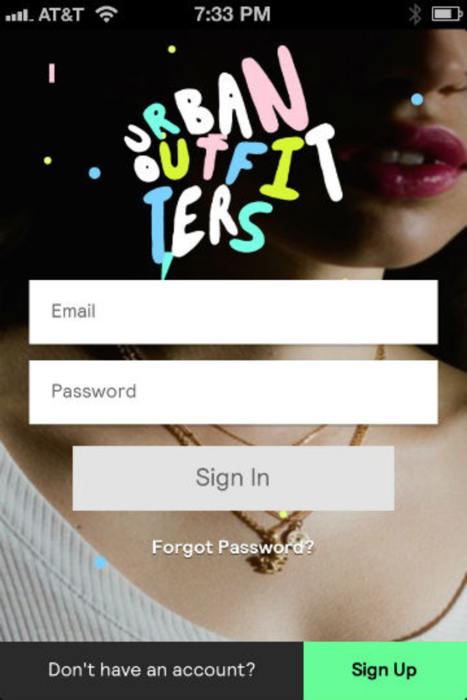Mobile is no longer a campaign accessory—it’s a marketing necessity. Specialty retail company Urban Outfitters introduced a new app this fall that allows consumers to engage with the brand through social media activities and in-app challenges.
Although Urban Outfitters already had an app, Marketing Manager Moira Gregonis says the brand wanted to interact with customers the same way that customers interact with their friends, such as through Twitter. Through the introduction of Urban On—a series of mini-challenges that include tweeting about a purchase, using a certain hashtag, or visiting a particular store—consumers can receive rewards for their interactivity, including badges, access to merchandise, and early sales notices. Urban Outfitters has more than 700,000 Twitter followers, Gregonis notes, so the brand knows it’s a field in which its customers play. The app also includes a 2D barcode and Urban ID number that consumers can have scanned at point of sale in-store to collect rewards. This also allows Urban Outfitters to tap into its customers’ preferences.
“We believe that Urban On and the other features in our app offer the most natural way of engaging with Urban Outfitters on the customer’s terms and not the company’s,” Gregonis says.
Other app features include the ability to tune into the brand’s music player UO Radio and participate in music related promotions, including the chance to win free concert tickets or the opportunity to attend a band’s sound check. Customers can also create a “My UO” account to personalize their app experience—such as by uploading a photo, changing the app background, and stating their college and gender—and track their rewards, badges, and tweets.
“My UO is a way for the customer to create a unique identity within the Urban Outfitters culture and define a few facts about themselves that help us ensure that only the most relevant communications are being provided to each individual,” Gregonis says.
Since releasing the app on iTunes on September 23, Urban Outfitters has experienced increases in sales and engagement, Gregonis says. However, integrating the app into the rest of Urban Outfitter’s technology stack was a bit of a challenge.
“Because we strived to create an omnichannel experience, our app had to integrate with every front- and back-end system,” Gregonis says. “You can imagine the complexity this creates. But our IT teams were able to pull together in-house and third-party applications that allowed all of our systems to interact seamlessly with the features in the app.”
To continue being where its customers are, Urban Outfitters plans to integrate Instagram into its app by the holiday season, Gregonis says. She adds that Urban Outfitters currently has more than 940,000 Instagram users, so integrating the platform is “only natural.”








